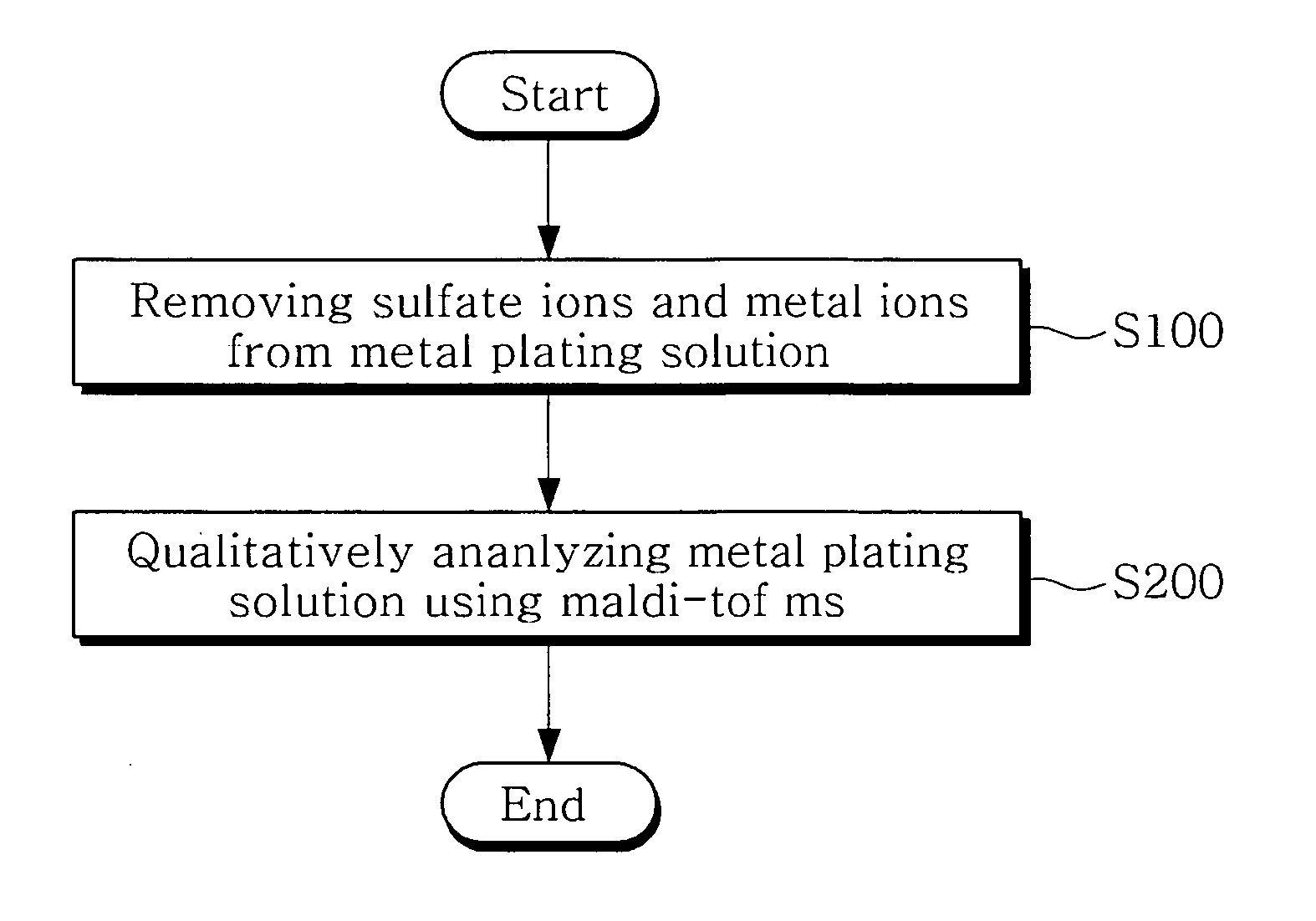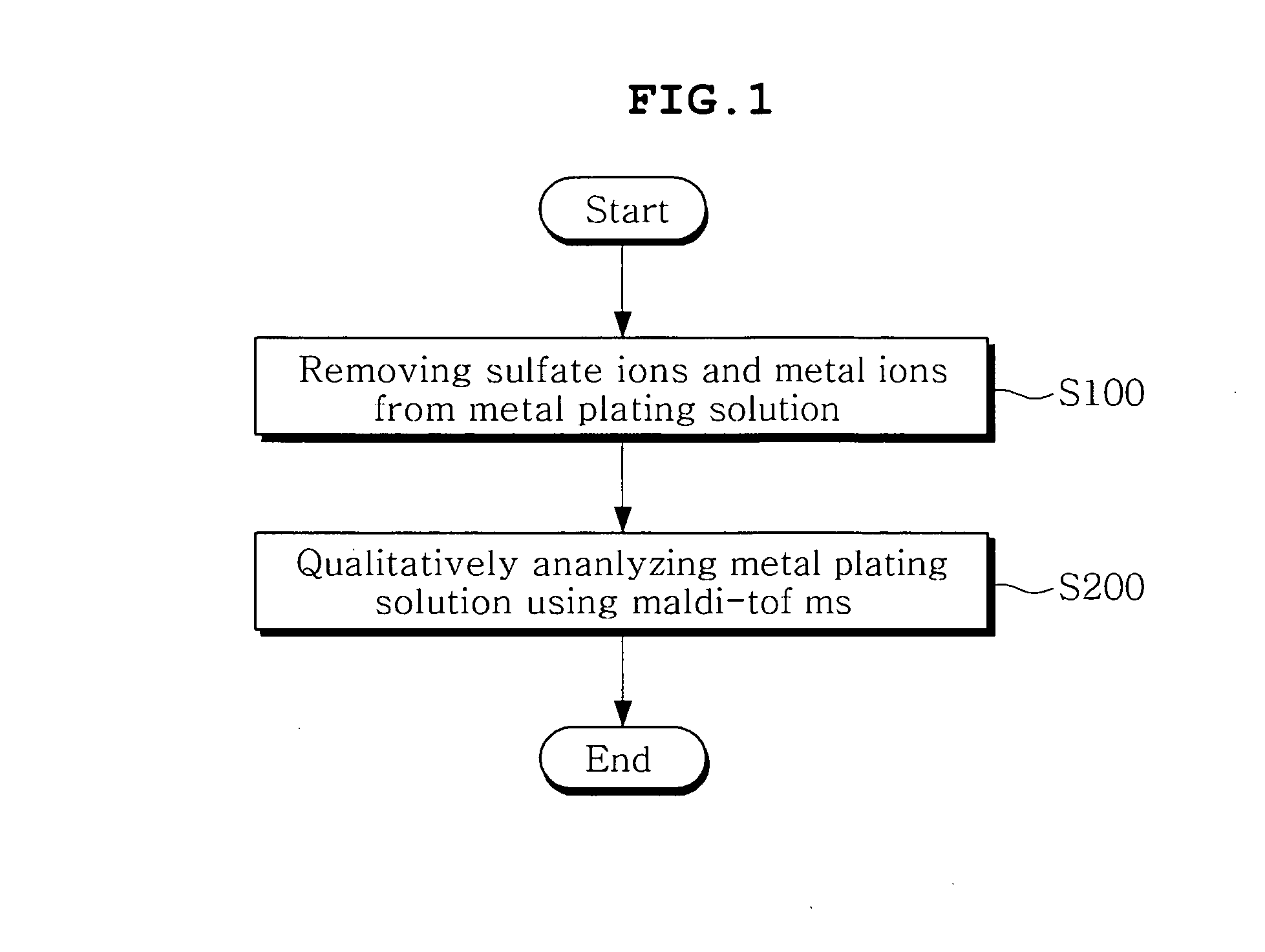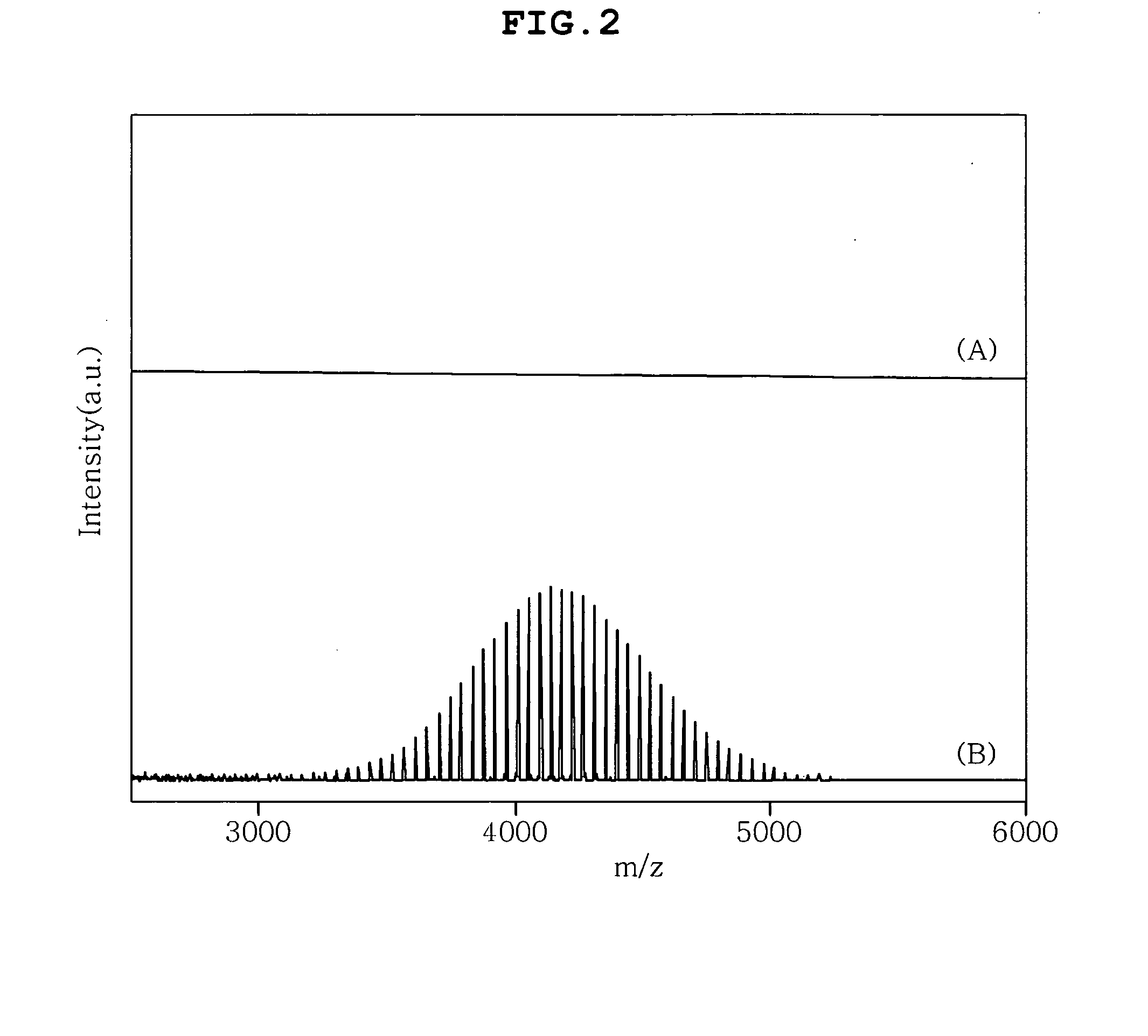Method and apparatus for qualitatively analyzing high-molecular additives in metal plating solution
a technology of additives and metal plating solution, applied in the direction of optical radiation measurement, separation process, instruments, etc., can solve the problems of reducing accuracy and repeatability, unable to conduct analysis, and unable to measure the absolute concentration of organic high-molecular additives present in strong acid, so as to improve the quality of products and accurately analyze the qualitative analysis
- Summary
- Abstract
- Description
- Claims
- Application Information
AI Technical Summary
Benefits of technology
Problems solved by technology
Method used
Image
Examples
preparation example 1
[0065]Preparation of Electrolytic Copper Sulfate Plating Solution Sample
[0066]140 g of sulfuric acid (H2SO4, 60%), 30 g of copper sulfate (CuSO4) and 30 ppm of hydrochloric acid (HCl, 35%) were dissolved in deionized water to form a basic plating solution, and then 25 mg of polyethylene glycol (PEG), having a molecular weight of 4000 Da, was added to the basic plating solution to prepare an electrolytic copper sulfate plating solution.
preparation example 2
[0067]Preparation of Pretreated Plating Solution, from which Copper Ions and Sulfate Ions are Removed, using Sodium Hydroxide (NaOH)
[0068]10 mL of the electrolytic copper sulfate plating solution sample prepared in Preparation Example 1 was put into a 100 mL beaker and was then stirred. 17.5 mL of a 1 M sodium hydroxide (NaOH) solution was slowly dropped onto the stirred plating solution to form a precipitate. When the precipitate was formed, the dropping of the sodium hydroxide solution was stopped, the plating solution was centrifuged, and then the precipitate was removed from the centrifuged plating solution and only the supernatant liquid was separated therefrom and then prepared.
preparation example 3
[0069]Preparation of Pretreated Plating Solution, from which Copper Ions and Sulfate Ions are Removed, using Barium Chloride (BaCl2)
[0070]10 mL of the electrolytic copper sulfate plating solution sample prepared in Preparation Example 1 was put into a 100 mL beaker and was then stirred. 40 mL of a 0.1 M barium chloride (BaCl2) solution was slowly dropped onto the stirred plating solution to form a precipitate. When the precipitate was formed, the dropping of the barium chloride solution was stopped, the plating solution was centrifuged, and then the precipitate was removed from the centrifuged plating solution and only the supernatant liquid was separated therefrom and then prepared.
PUM
| Property | Measurement | Unit |
|---|---|---|
| molecular weight | aaaaa | aaaaa |
| molecular weight | aaaaa | aaaaa |
| current density | aaaaa | aaaaa |
Abstract
Description
Claims
Application Information
 Login to View More
Login to View More - R&D
- Intellectual Property
- Life Sciences
- Materials
- Tech Scout
- Unparalleled Data Quality
- Higher Quality Content
- 60% Fewer Hallucinations
Browse by: Latest US Patents, China's latest patents, Technical Efficacy Thesaurus, Application Domain, Technology Topic, Popular Technical Reports.
© 2025 PatSnap. All rights reserved.Legal|Privacy policy|Modern Slavery Act Transparency Statement|Sitemap|About US| Contact US: help@patsnap.com



